Higher classification Prion | Phylum Chordata Rank Species | |
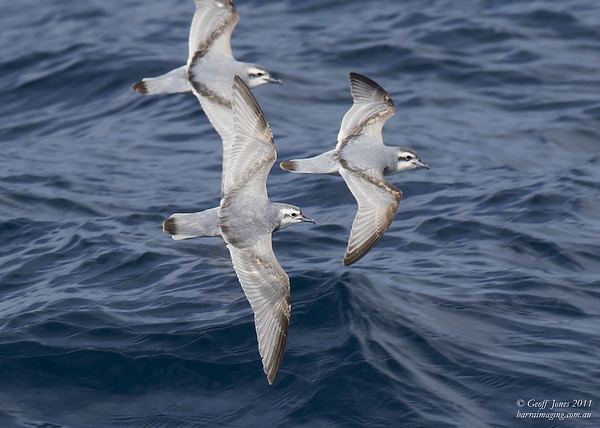 | ||
Similar Pachyptila, Prion, Bird, Antarctic prion, Blue petrel | ||
The slender-billed prion or thin-billed prion, Pachyptila belcheri, is a species of petrel, a seabird in the Procellariidae family. It is found in the southern oceans.
Contents
- Slender billed prion
- Etymology
- External Morphology
- Taxonomy and Internal Anatomy
- Range and Habitat
- Conservation
- Feeding
- Reproduction
- References
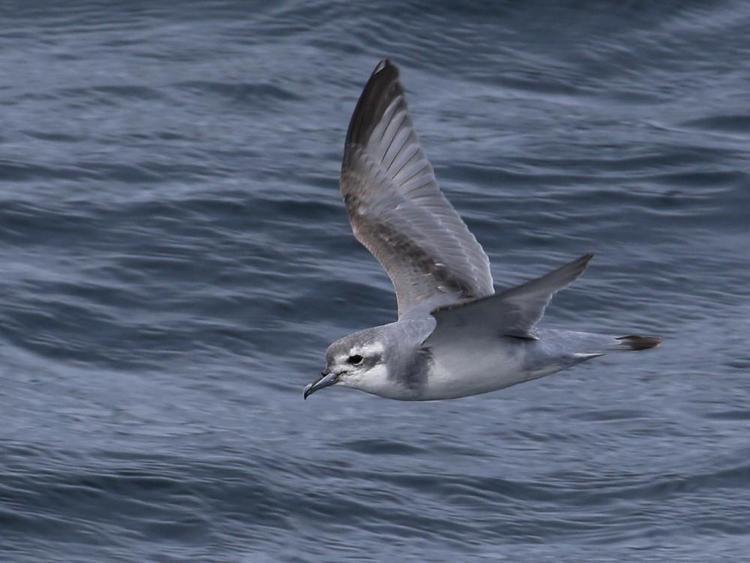
Slender billed prion
Etymology
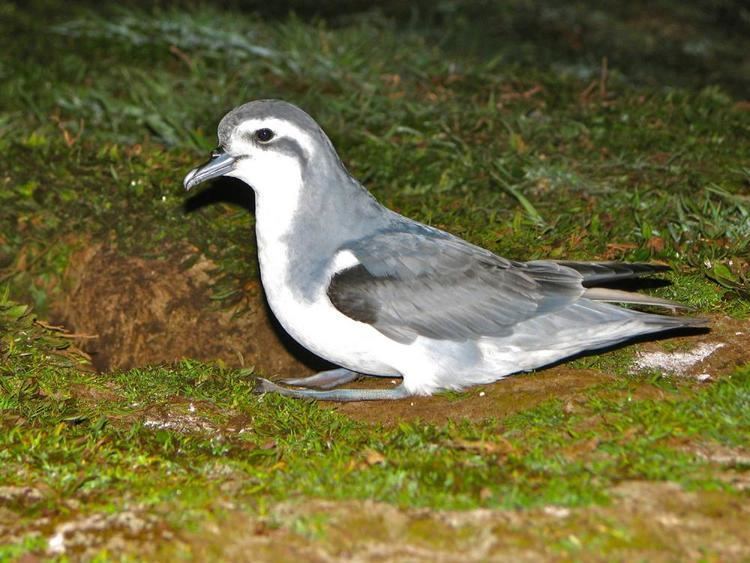
The genus name Pachyptila comes from the Greek words pakhus and ptilon. Pakhus means thick or stout. Ptilon means a feather.
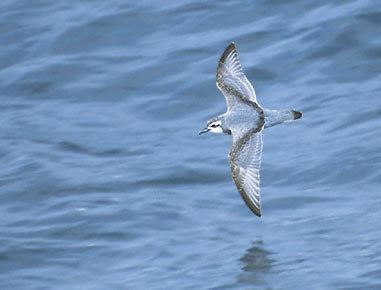
The name prion comes from the Greek word priōn, meaning "saw", a reference of the serrated edges of the birds' saw-like bill.
External Morphology

Like all prions, they are blue-grey above and white below with a dark "M" on their back to their wingtips. They have a white eyebrow and a dark line extending from below the eye almost to the neck. Their tail is wedge-shaped and grey with a black tip, their bill is blue-grey, and their feet are pale blue.
Taxonomy and Internal Anatomy
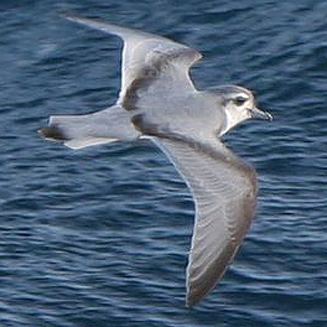
The slender-billed prion is a member of the Pachyptila genus, which, in combination with the Halobaena genus (whose single species is the blue petrel) makes up the polyphyletic traditional tribe of prions (or whalebirds). Prions are small petrels in the order Procellariiformes which share certain identifying features. First, they have nasal passages that attach to the upper bill called naricorns, although their nostrils are on top of the upper bill. Procellariiformes' bills are also unique in that they are split into between 7 and 9 horny plates; hence see below, under Etymology that the name prion within this order connotes a saw-like serrated edge to the bill. Prions produce a stomach oil made up of wax esters and triglycerides that is stored in the proventriculus, which they use against predators as well as an energy rich food source for chicks and for the adults during their long flights. Finally, they also have a salt gland, situated above the nasal passage, which helps desalinate their bodies by excreting a high saline solution from their nose, relieving excessive salt for their metabolism as they imbibe a high volume of salty ocean water.
Range and Habitat
The slender-billed prion spends all of his non-breeding time over ocean water in the southern oceans. When breeding, they will do so on the Crozet Islands, the Kerguelen Islands, the Falkland islands and Noir Island off the coast of southern Chile.
Conservation
This species has a very large range and their estimated population is 7,000,000, allowing the IUCN to classify them as Least Concern.
Feeding
Like all prions, the slender-billed eat zooplankton, by filtering it through their bill.
Reproduction
They are annual breeders and will lay one egg. Both parents will then incubate the egg and care for the young until they fledge.
